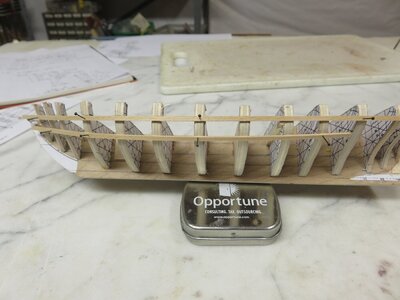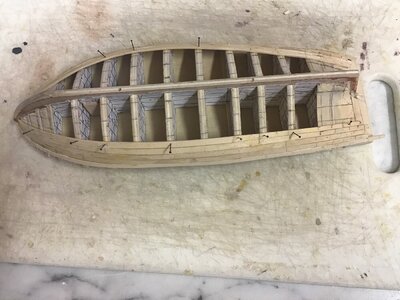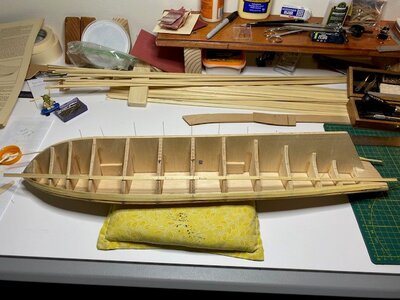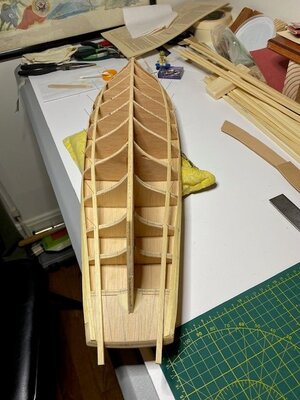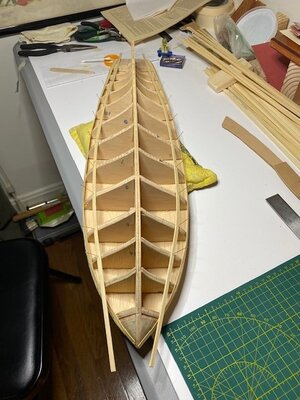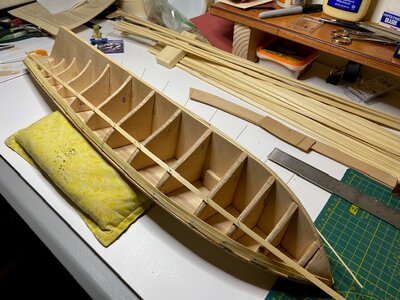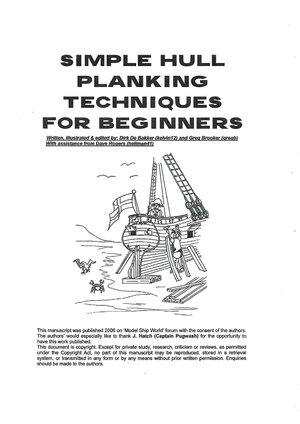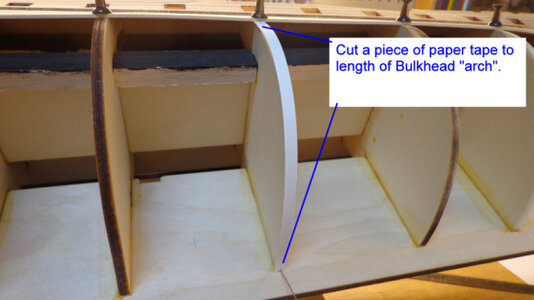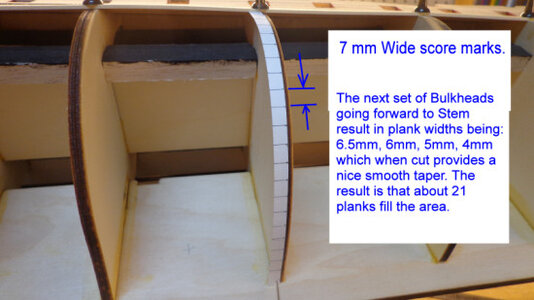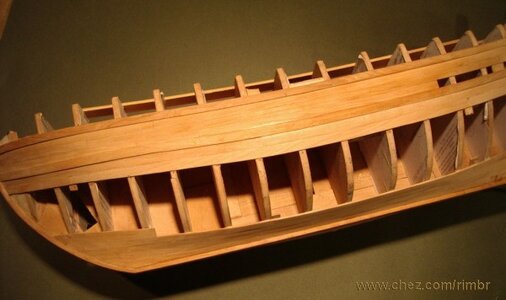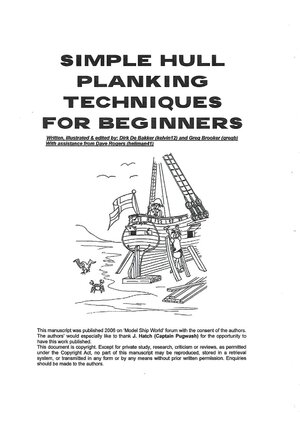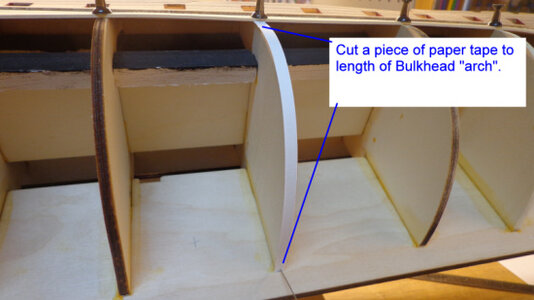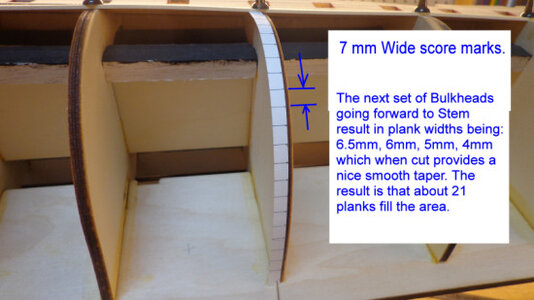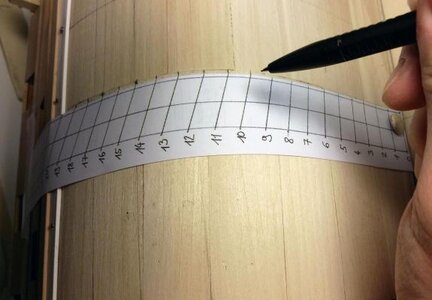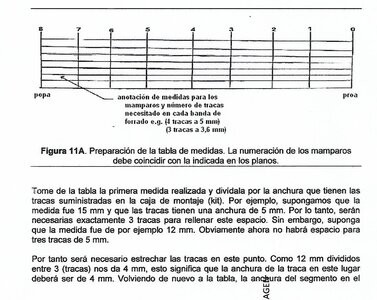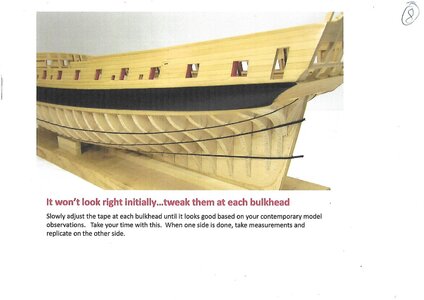Sorry, my text disappeared.
And sailer, when I still was young and a newbie, told myself THERE ARE 3IMPORT PLANkS
Nº !: A plank running from stern to beam about 2 mm below the main deck
N 3:On the lower edge of the false keel- this will guide you to make the hardboard
Nº 2:to be set approx in the middle of the ship, starting with the main bulkhead. let it run-DO NOT twist it
it is in fact a helping list, which can or will be removed according to your build.
It is very important too, to measure the number of planks needed, for the main deck- see below. As bulkheads are getting smaller and smaller-but the same amount of plank is to be inserted -meaning now you will have to measure each bulkhead. you will soon find out that mainly towards the bov you will have to cut each plank. see below.
Now planking, there are many builders, who do not take too much care about the 1Th planking, as they layer with filler, plastic wood or others and do hard work to sand the hull
In my case, I generally started -after shaping -from the bottom of the false keel going upwards with about 3 4 planks, then the opposite. from the main deck downward. In the end, they will meet somewhere in the middle. To avoid sharp edges of the planks, Iisanded always the underside of the planks a little to avoid this.
in the last images, the builder made to upper part from the main deck and up. then he decided to the lower part into two or 3 helping lines- a 2second plank
why do things easily and correct
when it is much easier to do it bad and wrong
View attachment 368931
View attachment 368932
View attachment 368933
View attachment 368934
View attachment 368935
View attachment 368936
View attachment 368937
View attachment 368938
View attachment 368940
View attachment 368941




